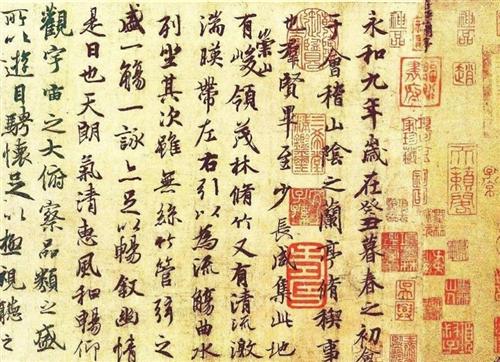

Preface to the Poems Composed at the Orchid Pavilion by Wang Xizhi
In China, calligraphy is referred to as shūfǎ (書法/书法), literally "way/method/law of writing"; shodō (書道) in Japan ("way/principle of writing"); and seoye (서예; 書藝) in Korea ("kill/criterion of writing").
Chinese calligraphy appreciated more or only for its aesthetic quality has a long tradition, and is today regarded as one of the arts (Chinese 藝術/艺术 pinyin: yìshù) in the countries where it is practised. Chinese calligraphy focuses not only on methods of writing but also on cultivating one's character and resilience.
It was considered to be one of the "scholar's four jewels" in ancient China along with playing a stringed musical instrument, the board game "Go", and painting. It has also led to the development of many forms of art in China, including seal carving, ornate paperweights, and inkstones.
One must know Wang Xizhi (王羲之, 303 CE-361 CE) when learning to practise calligraphy, a Chinese calligrapher, writer and politician who lived during the Jin Dynasty (265–420), best known for his mastery of Chinese calligraphy. Wang is generally regarded as the greatest Chinese calligrapher in history, and was a master of all forms of Chinese calligraphy, especially the running script. Furthermore, he is known as one of the Four Talented Calligraphers (四賢) in Chinese calligraphy. In addition to the esteem in which he is held in China, he has been and remains influential in Japanese calligraphy.
© Copyright Traditional Chinese Calligraphy